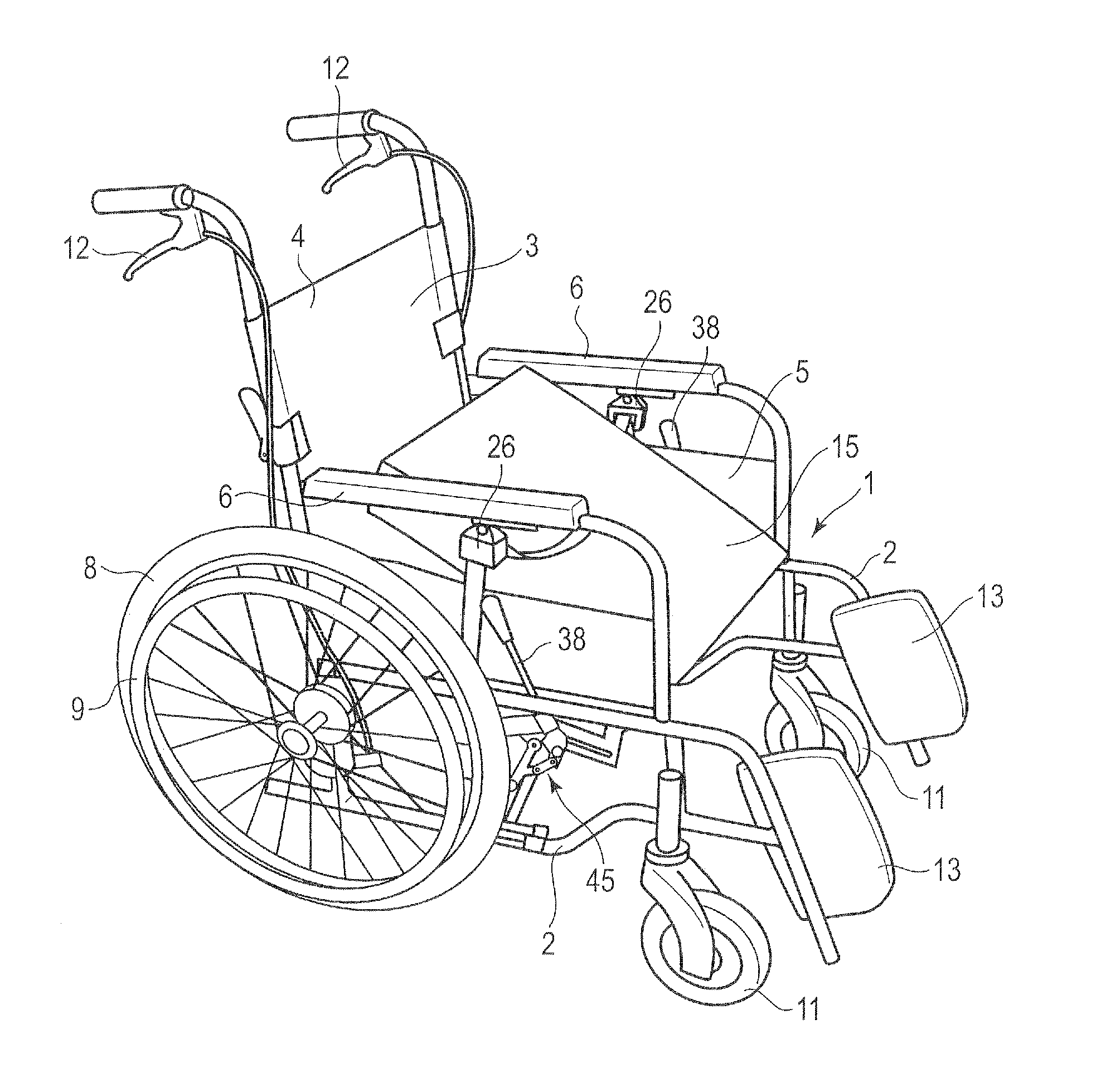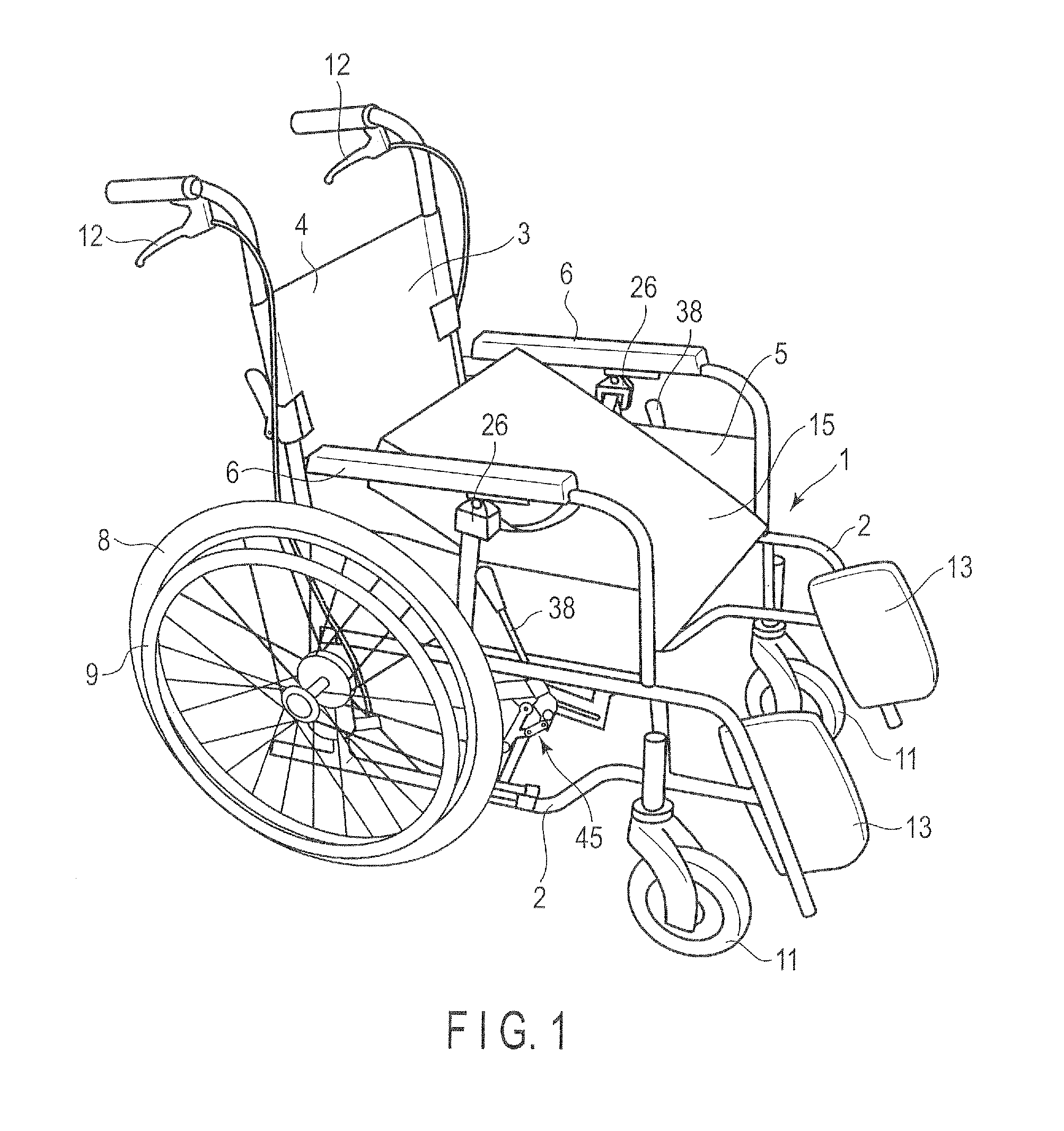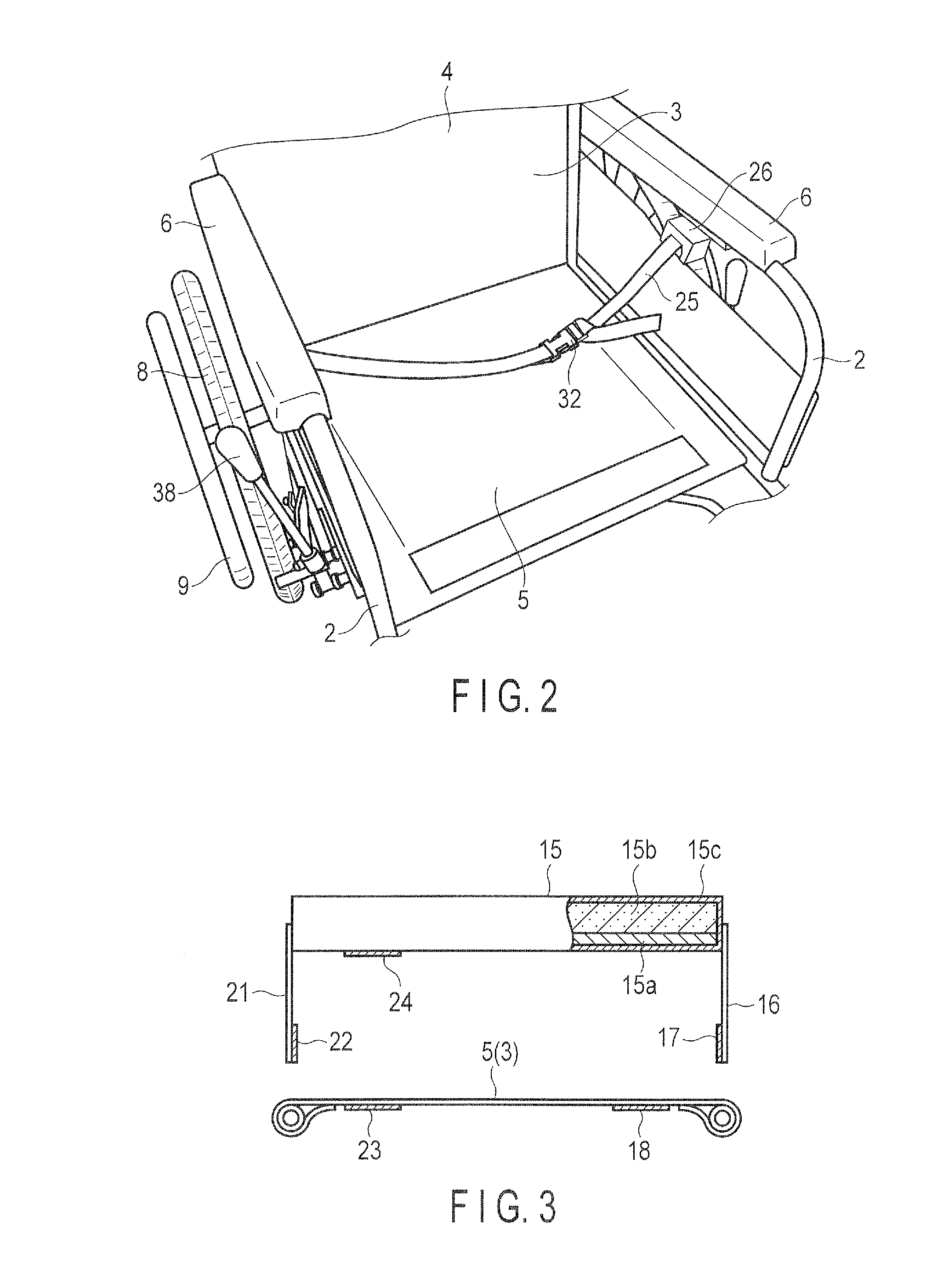Brake-equipped wheelchair
a brake device and wheelchair technology, applied in the field of brake devices, can solve the problems of low reliability, user forgetting to operate the brake device, wheelchair moving while the user is unprepared, etc., and achieve the effect of smooth release or application
- Summary
- Abstract
- Description
- Claims
- Application Information
AI Technical Summary
Benefits of technology
Problems solved by technology
Method used
Image
Examples
example 1
[0052]FIG. 1 to FIG. 10 show a first embodiment of the invention. FIG. 1 is a perspective view showing brake-equipped wheelchair. This wheelchair includes a conveyance body 1. The conveyance body 1 is constructed such that a pair of side frames 2, which are formed of pipe materials, are coupled with a predetermined distance. A cloth sheet 3 is provided between the side frames 2. Thereby, a back section 4 and a seat section 5 are formed in the conveyance body 1. Further, armrest portions 6 are formed on both sides of the seat section 5.
[0053]The sheet 3 includes a part provided on the back section 4 and a part provided on the seat section 5, which are divided at a part corresponding to a lower end of the back section 4 and a rear end of the seat section 5.
[0054]A pair of rear wheels 8 (only one rear wheel is illustrated) are rotatably provided at rear end portions on both sides of the conveyance body 1. Auxiliary wheels 9, which are smaller in diameter than the rear wheels 8, are int...
example 2
[0101]FIG. 11 to FIG. 13 show a second embodiment of the invention, which illustrates a modification of the working link mechanism. The same parts as in the first embodiment are denoted by like reference numerals, and a description thereof is omitted.
[0102]As shown in FIG. 11, a working link mechanism 45A of the second embodiment includes a coupling link 136 having one end pivotally attached to the coupling member 33 of the led-out portion 25a of the working belt 25. A bent portion 136a, which is bent upward, is formed at the other end portion of the coupling link 136.
[0103]The part of the bent portion 136a is pivotally attached via a support shaft 51 to a plate 39 which is provided on a lower surface of the seat section 5 of the conveyance body 1, with the plate surface of the plate 39 being vertically disposed. One end of pressing piece 52 is provided at a distal end portion of the bent portion 136a of the coupling link 136, such that the one end of the pressing piece 52 is resili...
example 3
[0121]FIG. 14 shows a modification of the guide body 26 according to a third embodiment of the invention. In this embodiment, the guide roller 29 is not provided in the guide body 26. Instead, a flat-shaped through-hole 61 for passing the working belt 25 is provided in the swinging member 28 of the guide body 26. In the through-hole 61, a surface, which is brought into contact with the working belt 25, is formed as a convex arcuate surface.
[0122]In the case where the through-hole 61 is formed in the swinging member 28 of the guide body 26, the guide body 26 may be swingably provided on the armrest portion 6, or the guide body 26 may be fixedly provided such that the through-hole 61 is inclined to be raised at a predetermined angle toward the rear side of the conveyance body 1.
[0123]Although not illustrated, without providing the swing member 28 on the conveyance body 1, a through-hole may be formed in the armrest portion 6 and the working belt 25 may be passed through the through-ho...
PUM
 Login to View More
Login to View More Abstract
Description
Claims
Application Information
 Login to View More
Login to View More - R&D
- Intellectual Property
- Life Sciences
- Materials
- Tech Scout
- Unparalleled Data Quality
- Higher Quality Content
- 60% Fewer Hallucinations
Browse by: Latest US Patents, China's latest patents, Technical Efficacy Thesaurus, Application Domain, Technology Topic, Popular Technical Reports.
© 2025 PatSnap. All rights reserved.Legal|Privacy policy|Modern Slavery Act Transparency Statement|Sitemap|About US| Contact US: help@patsnap.com



